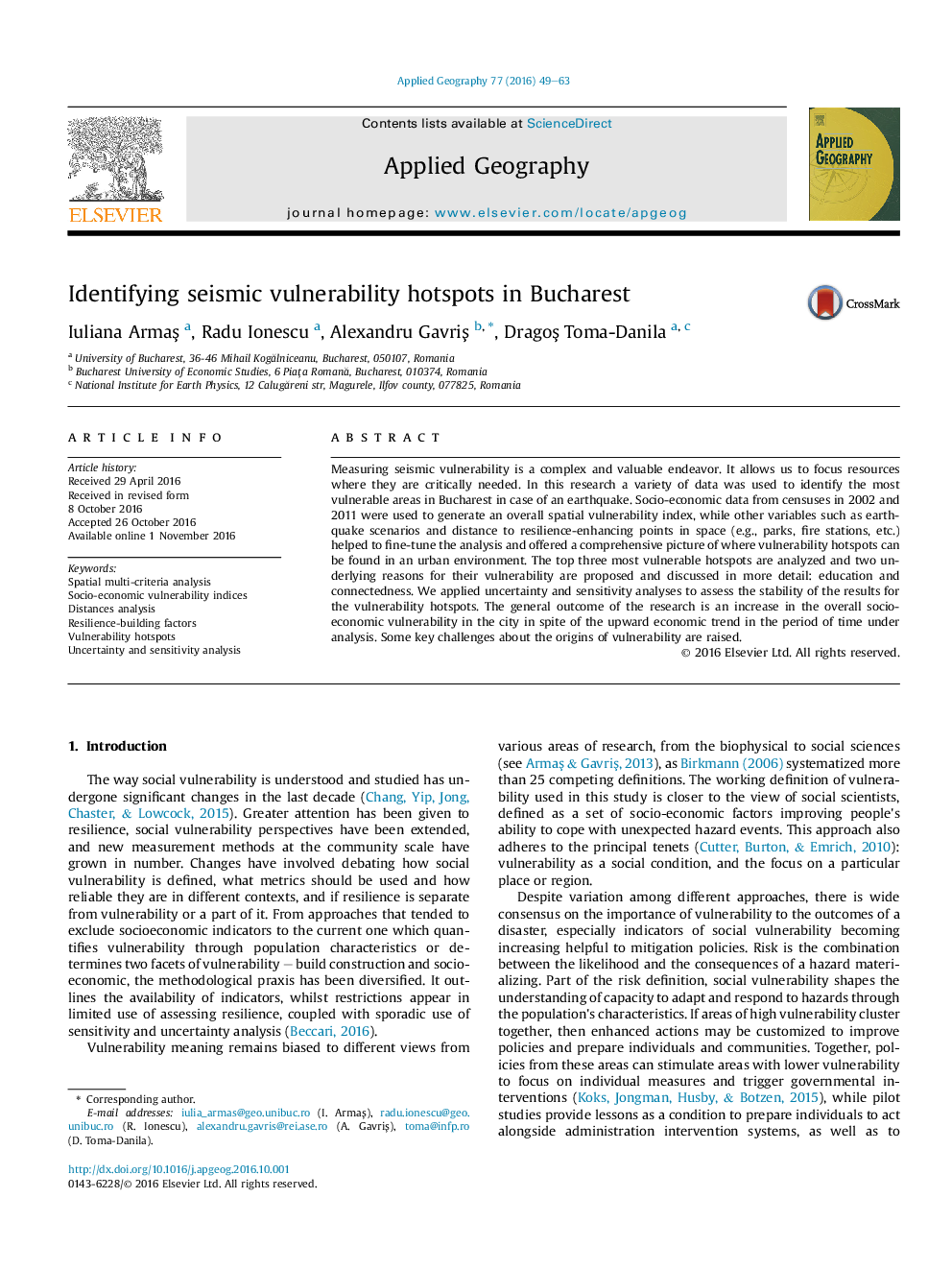| Article ID | Journal | Published Year | Pages | File Type |
|---|---|---|---|---|
| 6458495 | Applied Geography | 2016 | 15 Pages |
â¢Seismic vulnerability is explored in Bucharest.â¢Earthquake scenarios and distance to resilience-enhancing objectives add insights.â¢Top three most vulnerable hotspots are analyzed.â¢Social vulnerability has increased between 2002 and 2011.â¢Education and connectedness are key aspects in explaining vulnerability hotspots.
Measuring seismic vulnerability is a complex and valuable endeavor. It allows us to focus resources where they are critically needed. In this research a variety of data was used to identify the most vulnerable areas in Bucharest in case of an earthquake. Socio-economic data from censuses in 2002 and 2011 were used to generate an overall spatial vulnerability index, while other variables such as earthquake scenarios and distance to resilience-enhancing points in space (e.g., parks, fire stations, etc.) helped to fine-tune the analysis and offered a comprehensive picture of where vulnerability hotspots can be found in an urban environment. The top three most vulnerable hotspots are analyzed and two underlying reasons for their vulnerability are proposed and discussed in more detail: education and connectedness. We applied uncertainty and sensitivity analyses to assess the stability of the results for the vulnerability hotspots. The general outcome of the research is an increase in the overall socio-economic vulnerability in the city in spite of the upward economic trend in the period of time under analysis. Some key challenges about the origins of vulnerability are raised.
